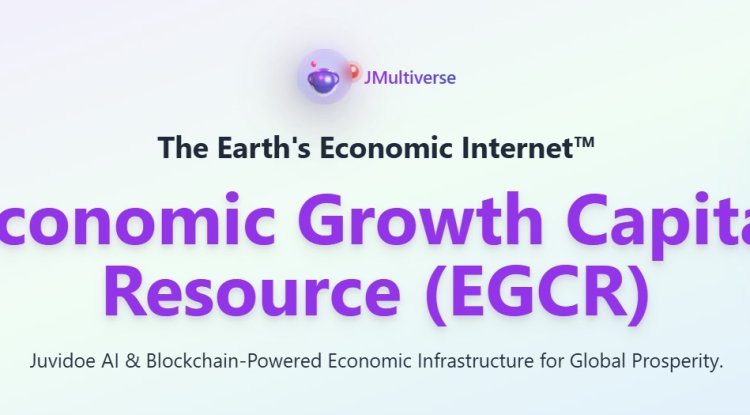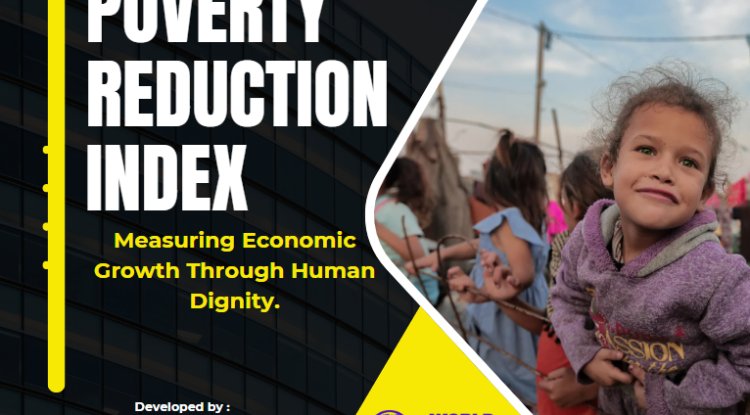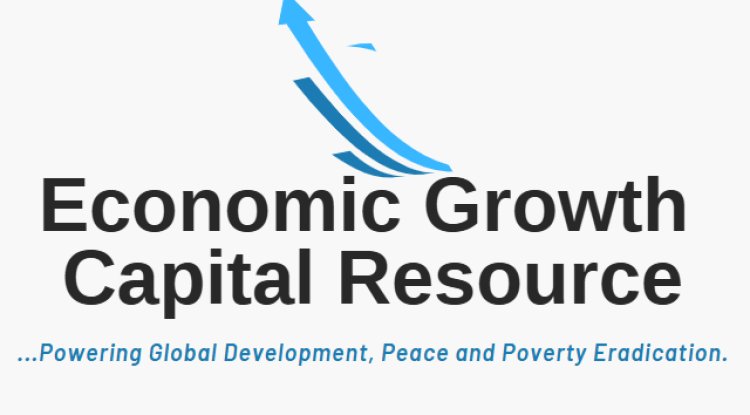Investing in Energy, Water, and Telecommunications Infrastructure
In an era where economic development is crucial for governments at all levels, investing in essential infrastructure such as energy, water, and telecommunications is pivotal in fostering independent growth. Making wise resource allocations to these areas will considerably increase the prosperity of state, provincial, regional, and local governments. By doing this, they can increase their ability to entice enterprises, create jobs, and improve their citizens' living standards. Let's delve into the immense benefits of investing in energy, water, and telecommunications infrastructure, highlighting how it can transform the landscape for governments, boost economic prosperity, and lead to sustainable development.

The Power of Energy Infrastructure Investment
- Enhanced Energy Security
Investing in robust energy infrastructure offers a multitude of advantages, particularly in the realm of energy security. By diversifying energy sources, governments can reduce their dependence on external suppliers and enhance their resilience to unforeseen disruptions. Developing independent energy systems, such as renewable energy projects, ensures a stable supply and promotes environmental sustainability.
2. Job Creation and Economic Growth
Energy infrastructure investments have the potential to stimulate economic growth and create employment opportunities. Initiatives such as building power plants, expanding transmission networks, and investing in smart grids require skilled labor, driving job growth in the construction and operational phases. A thriving energy sector also attracts businesses that rely on a stable and affordable energy supply, further boosting local economies.
3. Sustainable Development and Environmental Stewardship
Renewable energy investments, such as solar, wind, and hydroelectric power, help to achieve sustainable development goals. Governments prioritizing clean energy infrastructure can reduce carbon emissions, mitigate climate change impacts, and foster a greener future. By aligning economic growth with environmental stewardship, governments can create a legacy of responsible development for future generations.
Empowering Communities through Water Infrastructure
- Access to Clean and Reliable Water
Investing in water infrastructure ensures access to clean, potable water for communities. Governments can modernize water treatment facilities, expand distribution networks, and implement effective wastewater management systems. A reliable water supply enhances public health, sanitation, and overall quality of life, empowering communities to flourish independently.
- Resilience against Water Scarcity and Natural Disasters
Climate change poses challenges in terms of water scarcity and extreme weather events. Governments that invest in water infrastructure, such as reservoirs, desalination plants, and flood control systems, can fortify their communities against these risks. Building resilience to droughts, floods, and other disasters helps maintain stability and facilitates independent growth.
- Agricultural Productivity and Food Security
Investments in irrigation systems and water management techniques directly impact agricultural productivity. State, provincial, regional, and local governments can support farmers and increase food security by ensuring efficient water delivery to agricultural lands. This enables farmers to produce higher yields, diversify crops, and contribute to local and regional food supplies.
Transforming Connectivity through Telecommunications Infrastructure
1. Bridging the Digital Divide
Investing in telecommunications infrastructure, including broadband networks and mobile connectivity, is essential for bridging the digital divide. Governments empower their communities with greater educational opportunities, digital inclusion, and economic growth by ensuring all citizens can access high-speed internet and reliable telecommunications services. Narrowing the digital divide promotes equity and independent development.
2. Enabling E-Governance and Smart Solutions
Robust telecommunications infrastructure forms the backbone of e-governance initiatives, enabling efficient service delivery and citizen engagement. Governments that invest in smart city solutions, such as smart grids, intelligent transportation systems, and remote healthcare, enhance the quality of life for their citizens while improving operational efficiency. Embracing smart technologies fosters innovation and independent governance.
3. Attracting Investments and Businesses
Quality telecommunications infrastructure is a critical factor in attracting businesses and investments. Companies seek locations with reliable connectivity and advanced digital infrastructure to support their operations. State, provincial, regional, and local governments prioritizing telecommunications investments can create an environment conducive to entrepreneurship, job creation, and economic prosperity.
Investing in energy, water, and telecommunications infrastructure offers a transformative opportunity for state, provincial, regional, and local governments to flourish independently. By recognizing the significant benefits of such investments, governments can prioritize the development of robust, sustainable, and technologically advanced infrastructure. This will not only strengthen their economic foundations but also enhance the overall well-being of their citizens. By diversifying energy sources, ensuring access to clean water, and bridging the digital divide, governments can foster innovation, attract investments, and create an environment conducive to independent growth. As we navigate a rapidly changing world, governments at all levels must seize the potential of energy, water, and telecommunications infrastructure, unlocking the path to a prosperous and self-reliant future.
Creating Smart Cities and Digital Innovation Hubs
Smart cities have emerged as powerful catalysts for progress, enabling sub-national governments to thrive independently and foster innovation in their regions. These interconnected urban ecosystems go beyond data and digital technology, shaping a future where the quality of life is elevated to new heights. In this transformative journey, key elements work harmoniously to drive change: technology infrastructure, tailored applications, and widespread adoption.
At the foundation of every smart city lies a robust technology base, encompassing a critical mass of smartphones and sensors seamlessly connected through high-speed communication networks. These essential components serve as the backbone of the digital revolution, enabling real-time data collection and analysis. City agencies gain unprecedented insight into unfolding events, shifting demand patterns, and cost-effective solutions by unlocking the potential of comprehensive, up-to-the-minute data.
The second layer comprises specific applications, acting as the bridge between raw data and tangible outcomes. Technology providers and app developers are pivotal in transforming data into actionable alerts, valuable insights, and concrete actions. These innovative tools equip cities to enhance safety, efficiency, sustainability, and overall well-being. However, the true power of these applications lies in their widespread adoption by cities, companies, and the public. Successful implementation hinges on behavior change, encouraging individuals to embrace alternative transportation modes, optimize resource usage, and prioritize preventive self-care to alleviate pressure on healthcare systems.
Smart-city technologies possess the immense untapped potential to enhance various dimensions of urban quality of life. A comprehensive assessment conducted by MGI highlights the transformative effects across safety, time efficiency, health, environmental quality, social connectedness, civic participation, employment, and cost of living. While outcomes vary across cities due to factors such as existing infrastructure and baseline conditions, the opportunities for positive change are abundant.
Crime prevention and public safety are areas where smart-city applications can make significant strides. By fully deploying a range of applications, cities can potentially reduce fatalities caused by homicide, road accidents, and fires by 8 to 10 percent. Imagine the potential impact of a high-crime town of five million residents, where this reduction could save up to 300 lives annually. Moreover, assault, robbery, burglary, and auto theft incidents could decrease 30 to 40 percent, granting citizens the freedom to move with a sense of security. Law enforcement agencies receive invaluable support from various advanced tools and approaches, such as data-driven policing methods, real-time crime mapping, predictive policing, gunshot detection systems, smart surveillance, and home security systems. These technologies enable law enforcement to respond swiftly and effectively, ensuring the safety of communities while upholding and respecting civil rights.
Time is of the essence during emergencies, where seconds can make a life-saving difference. Smart systems optimize call centers and field operations, while traffic-signal preemption provides unhindered pathways for emergency vehicles. These applications alone can reduce emergency response times by 20 to 35 percent. A city with an already low average response time of eight minutes could shave off nearly two precious minutes, while a city with an initial average response time of 50 minutes may achieve a reduction of more than 17 minutes. Swift and efficient emergency services are essential for preserving lives and minimizing the impact of critical situations.
Daily commutes often become frustrating ordeals for millions of urban dwellers worldwide. However, smart mobility applications offer a glimmer of hope, promising to make these journeys faster and more seamless. By 2025, cities embracing smart-mobility solutions have the potential to cut commuting times by an average of 15 to 20 percent. In densely populated areas with extensive transit networks, these technologies can save the average commuter up to 15 minutes daily. The improvements could be even more remarkable in developing cities with more arduous commutes, saving 20 to 30 minutes of time every day.
To streamline the commuting experience, smart cities integrate various modes of transportation and leverage real-time data to optimize routes and schedules. Intelligent transportation systems provide commuters with accurate information on traffic conditions, public transit arrivals, and available parking spaces. This empowers individuals to make informed decisions, choose the most efficient routes, and seamlessly transition between different modes of transportation.
Smart parking solutions are crucial in reducing traffic congestion and enhancing convenience. Real-time parking availability data and digital payment systems enable drivers to locate and secure parking spaces quickly, minimizing the time spent searching for parking. Additionally, smart parking systems can adjust pricing based on demand dynamically, encouraging turnover and optimizing parking space utilization.
Efforts to create sustainable and environmentally friendly cities are amplified through smart initiatives. By leveraging data and technology, cities can monitor and manage energy consumption, optimize waste management systems, and promote renewable energy sources. Smart grids and energy management systems enable efficient distribution and consumption of electricity, reducing overall energy waste and carbon emissions. Waste management systems with sensors and real-time data analysis optimize garbage collection routes, leading to cost savings and a cleaner environment.
Public health and well-being are paramount in smart cities, with digital innovation hubs playing a vital role in promoting healthy lifestyles and proactive healthcare. IoT devices, wearable technology, and health monitoring applications enable individuals to track and manage their well-being. From fitness trackers encouraging physical activity to smart healthcare platforms facilitating remote consultations and personalized treatment plans, technology empowers individuals to take charge of their health and make informed decisions.
Social connectedness and civic participation are fundamental pillars of thriving communities. Smart cities leverage technology to foster greater citizen engagement, transparency, and participation in decision-making processes. Digital platforms and mobile applications allow residents to voice their opinions, report issues, and collaborate with local authorities. This inclusive approach empowers citizens to actively contribute to shaping their communities and creates a sense of ownership and pride.
Furthermore, smart cities provide fertile ground for economic growth and employment opportunities. They attract investments and cultivate a vibrant ecosystem of startups and tech companies by fostering innovation and supporting digital entrepreneurship. This, in turn, leads to job creation, skill development, and economic prosperity. By leveraging technology to address urban challenges, smart cities become magnets for talent and catalysts for economic transformation.
While the potential of smart cities and digital innovation hubs is vast, their successful implementation requires collaboration among various stakeholders, including governments, private sector entities, academia, and citizens. Policies and regulations must support innovation while safeguarding privacy and security. Investments in infrastructure and digital literacy programs are essential to bridge the digital divide and ensure equal access to the benefits of technology.
Smart cities and digital innovation hubs hold tremendous potential to empower sub-national governments and foster flourishing communities. Through the integration of technology, data, and citizen engagement, these cities can enhance safety, efficiency, sustainability, and quality of life. By embracing smart solutions, cities can unlock new opportunities for economic growth, social inclusion, and environmental stewardship, shaping a future where urban living is seamless, sustainable, and prosperous for all.
Transforming Natural Resources into Economic Assets
The global demand and prices for oil, gas, and minerals have witnessed an unprecedented surge in recent years. The economic successes of numerous emerging economies have largely driven this remarkable growth. While this development presents a promising opportunity for mineral-rich countries to drive economic and social development, concerns linger based on past experiences that have led to missed opportunities in promoting inclusive growth. Identifying the factors that have caused some mineral-rich countries to fail while others have succeeded in their development objectives is crucial. This comprehensive analysis explores the potential of sub-national governments to independently harness natural resources as economic assets, fostering flourishing opportunities for regions and local communities.
The Resource Paradox
Extensive research has demonstrated contrasting outcomes between resource-poor and resource-rich countries, shedding light on the economic, political, and social disparities. Countries reliant on exploiting mineral resources have generally fared worse over the past decades. Multiple explanations have been proposed to understand this paradox. The recent resurgence in the extractive industries has reignited the debate, with policymakers seeking effective strategies to help resource-dependent nations escape the 'resource curse.' A consensus is emerging, suggesting that disparities in economic and social performance can be attributed to variations in the quality of institutions. Countries with robust institutional frameworks tend to benefit more from their resource wealth.
Understanding the Institutional Dimension
While acknowledging the importance of institutions, it is essential to delve deeper into the underlying causal linkages that connect institutions to positive development outcomes. The existing literature on the institutional' resource curse' has highlighted several theoretical and methodological challenges, leaving the policy implications inconclusive. Consequently, a conceptual approach is necessary to identify institutions' role in mineral-rich countries comprehensively. Institutions play a crucial role in resolving distributional conflicts and managing transformative processes that often underlie such conflicts. Drawing inspiration from the political economy of taxation, this paper will explore the potential for sub-national governments to enhance their development capacity in mineral-rich states.
Reframing Policy Perspectives
In the late 1980s, economists observed that resource-poor economies had generally outperformed their resource-rich counterparts. This led to initial hypotheses suggesting adverse macro and microeconomic effects as the underlying cause, including the well-known 'Dutch Disease,' deterioration of terms of trade, and crowding out investment in non-resource sectors. However, the failure of many countries to adopt appropriate policy responses raised suspicions about deliberately poor policy choices. This sparked a shift in focus to examine the political-economic effects induced by mineral wealth, which could be responsible for suboptimal policy decisions.
The Agency-Focused Perspective
One prominent perspective emphasizes the agency-focused dynamics within mineral-rich countries. According to this view, policymakers driven by self-interest may prioritize personal gain over collective outcomes, compromising economic and social development objectives. The lure of capturing resource rents undermines the pursuit of the public interest. Sub-national governments must address this dissonance to unlock flourishing opportunities and ensure that policy decisions align with the greater good.
The Structural Perspective
An alternative perspective highlights the impact of structures within mineral-rich countries. Resource wealth often triggers distributional conflicts, distorting the relationships between ruling elites, the state, and society. These conflicts shape economic and social structures, discouraging diversification and impeding progress in non-resource sectors. This model argues that an initially skewed distribution of income and assets perpetuates a cycle of wealth transfer, hindering economic diversification, social change, and competitiveness. Contrasting this model is the competitive industrialization approach, where countries lacking natural resources deliberately pursue development objectives that benefit broader constituencies. Sub-national governments have a critical role in fostering inclusive development, strengthening structures that promote comparative cost advantages, and enabling a process of wealth creation supported by a developmental state.
Empowering Sub-national Governments
Both perspectives face a common challenge in terms of policy outlook. If poor economic and social outcomes in mineral-rich countries are inherently linked to deterministic political-economic mechanisms driven by resource wealth, the scope for domestic intervention may appear limited. Normative appeals for behavioral change may also prove ineffective if the corrupting influence of resource wealth influences politicians and policymakers. However, a transformative solution lies in empowering sub-national governments to take charge of their natural resources and leverage them as economic assets. By decentralizing decision-making and promoting local ownership, regions and local communities gain the autonomy and motivation to drive sustainable development.
Unlocking Flourishing Opportunities
Sub-national governments can adopt innovative strategies to transform natural resources into economic assets. They can foster economic diversification, encourage entrepreneurship, and promote job creation by prioritizing inclusive growth and social inclusion. Implementing transparent governance structures, sound fiscal management, and effective regulatory frameworks are vital steps toward creating an enabling environment for private sector investment. Furthermore, investing in human capital through education and skills development programs empowers local communities to actively participate in economic activities and reap the benefits of resource wealth.
Collaborative Partnerships
Harnessing natural resources as economic assets require collaborative partnerships between sub-national governments, civil society organizations, and the private sector. Engaging local communities in decision-making processes, ensuring fair revenue sharing, and safeguarding environmental sustainability are key pillars for successful resource management. By establishing strong partnerships, sub-national governments can access technical expertise, financial resources, and best practices, creating a supportive ecosystem for sustainable development.
Transforming natural resources into economic assets is an ambitious yet achievable goal for sub-national governments. By challenging the traditional narratives of the 'resource curse' and emphasizing independent pathways to flourishing, regions, and local communities can unlock their true potential. Through robust institutions, visionary policies, and collaborative partnerships, sub-national governments can drive inclusive growth, promote social inclusion, and create a future where natural resources become catalysts for sustainable development. It is time to redefine the narrative and empower sub-national governments to shape their destinies, transforming resource abundance into shared prosperity.




















